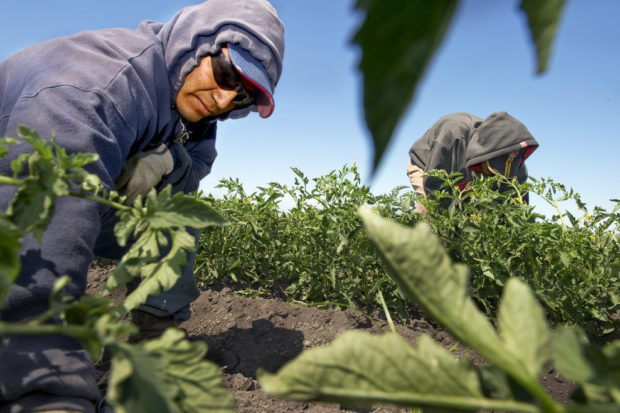
Driving up and down the Central Valley during the summer months, it is common to see thousands of farmworkers laboring from sunrise to sunset, often tolling for more than 10 hours of hard work under the inclement heat. This year, California and seven other Western states experienced a heat wave that has broken all-time highs and resulted in the hottest month of June on record.
Although most jobs in the Central Valley offer their workers air conditioning or other ways to tolerate the heat, farmworkers must endure the hot summer days with limited protection, which increases the potential for heat-related illness. In 2005, California approved landmark heat standards that were implemented after a string of farmworker deaths from heat exposure prompted demands for action.
Over the years these standards have been strengthened, but the reality is that many employers are still cutting corners. For example, the week of July 5, when the weather in Fresno County oscillated around 100–111 degrees, farmworkers in the small rural community of Laton were not provided with shade because the contractors considered the stone fruit trees as offering enough shade to protect workers from the heat.
Another way in which the extreme heat during the summer days affects farmworkers is by reducing their income. Workdays are cut during the days when temperatures surpass 100 degrees. This is problematic because, according to the California Research Bureau, farmworkers in California are at a higher risk for living in poverty. Seeing their checks cut in half, while at the same time having to pay more to cool their homes, is just another example of how farmworkers are more significantly affected by the extreme heat.
Most farmworkers do not have the economic means to pay for better weatherization of their homes, many of which still have swamp coolers. Furthermore, the relentless heat is also exacerbating the drought that continues to reshape landscapes and severely burden water resources while setting the stage for another potentially disastrous wildfire season.
Last year’s fire season was the worst in California’s history, claiming thousands of trees and homes. Extreme weather was a major cause of these fires, while lightning and record-breaking heat waves combined with Diablo and Santa Ana winds sparked wildfires across our state.
Again, farmworkers got the short side of the stick; they not only endured the heat but also the hazardous air quality that covered the Central Valley between July and October because of the Creek Fire and the many other fires affecting Fresno, Tulare, Kings and Stanislaus counties.
Seyed Sadredin, the former director of the San Joaquin Valley Air Pollution Control District, used to downplay the effect of air pollution by assuring that someone needs to be outdoors 2–3 hours or more to face significant health risks when the Valley sees days of Level 5 in the Air Quality Index. Well, Sadredin seemed to ignore that farmworkers spend at least eight hours outdoors, so they are significantly more affected by air pollution all the time, but especially during wildfires.
New evidence shows that Hispanic and persons with a low socioeconomic status have a higher estimated risk of death from any cause in association with particulate matter (PM) exposure than the general population.
In sum, farmworkers are the main engine of a billion-dollar industry, are praised as “essential workers” and are indeed essential so that we can all enjoy delicious fruits and vegetables during the summer months, but they pay a high price. They are disproportionately affected by extreme weather, air pollution and other environmental hazards, including exposure to pesticides and fertilizers.
Next time that you enjoy a juicy peach, a nectarine or a tomato, thank the farmworkers that make it possible and remember their painful journey during the summer months.
*****
Nayamin Martinez is the executive director of the Central California Environmental Justice Network.
